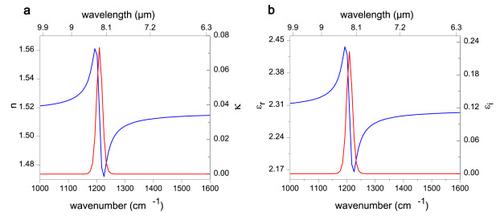当前位置:
X-MOL 学术
›
Planet. Space Sci.
›
论文详情
Our official English website, www.x-mol.net, welcomes your feedback! (Note: you will need to create a separate account there.)
Determination of optical constants from Martian analog materials using a spectro-polarimetric technique
Planetary and Space Science ( IF 2.4 ) Pub Date : 2020-11-13 , DOI: 10.1016/j.pss.2020.105138 G. Alemanno , E. Garcia-Caurel , J. Carter , F. Poulet , R. Brunetto , A. Alèon-Toppani , R.G. Urso , O. Mivumbi , C. Boukari , V. Godard , F. Borondics
Planetary and Space Science ( IF 2.4 ) Pub Date : 2020-11-13 , DOI: 10.1016/j.pss.2020.105138 G. Alemanno , E. Garcia-Caurel , J. Carter , F. Poulet , R. Brunetto , A. Alèon-Toppani , R.G. Urso , O. Mivumbi , C. Boukari , V. Godard , F. Borondics

|
The technique of spectroscopic ellipsometry is a powerful tool for the characterization of the optical properties of materials. This technique represents a significant refinement over the semi-empirical approach to optical constants determination using BRDF (Bidirectional Reflectance Distribution Function) measurements of a finite set of grain sizes for each mineral. It also allows obtaining, not only the optical constants, but also information about the dependence of optical response on sample orientation respect to the illuminating light beam. In this work, we present our experimental approach to derive optical constants of Martian analogue materials based on an infrared ellipsometry technique. We derived the optical constants of gypsum between 750 and 5000 cm (2–13 μm) using data obtained with an infrared spectroscopic Mueller ellipsometer. Thanks to the high sensitivity of the ellipsometric measurements, and despite of a rather complex data analysis protocol, the results obtained for the gypsum samples show that it is possible to successfully use this technique for direct determination of optical constants of natural minerals. The method discussed here can provide the planetary science community with laboratory derived optical constants of a large number of minerals and materials (either natural or synthetic).
中文翻译:

使用分光偏振技术测定火星模拟材料的光学常数
椭圆偏振光谱技术是表征材料光学特性的有力工具。该技术是对使用 BRDF(双向反射分布函数)测量每种矿物的有限晶粒尺寸来确定光学常数的半经验方法的重大改进。它还不仅可以获得光学常数,还可以获得有关光学响应对样品相对于照明光束的方向的依赖性的信息。在这项工作中,我们提出了基于红外椭圆光度技术推导火星模拟材料的光学常数的实验方法。我们利用红外光谱穆勒椭偏仪获得的数据得出了 750 至 5000 厘米(2-13 微米)之间石膏的光学常数。由于椭圆测量的高灵敏度,并且尽管数据分析协议相当复杂,石膏样品获得的结果表明可以成功地使用该技术直接测定天然矿物的光学常数。这里讨论的方法可以为行星科学界提供大量矿物和材料(天然或合成)的实验室衍生光学常数。
更新日期:2020-11-13
中文翻译:

使用分光偏振技术测定火星模拟材料的光学常数
椭圆偏振光谱技术是表征材料光学特性的有力工具。该技术是对使用 BRDF(双向反射分布函数)测量每种矿物的有限晶粒尺寸来确定光学常数的半经验方法的重大改进。它还不仅可以获得光学常数,还可以获得有关光学响应对样品相对于照明光束的方向的依赖性的信息。在这项工作中,我们提出了基于红外椭圆光度技术推导火星模拟材料的光学常数的实验方法。我们利用红外光谱穆勒椭偏仪获得的数据得出了 750 至 5000 厘米(2-13 微米)之间石膏的光学常数。由于椭圆测量的高灵敏度,并且尽管数据分析协议相当复杂,石膏样品获得的结果表明可以成功地使用该技术直接测定天然矿物的光学常数。这里讨论的方法可以为行星科学界提供大量矿物和材料(天然或合成)的实验室衍生光学常数。



























 京公网安备 11010802027423号
京公网安备 11010802027423号